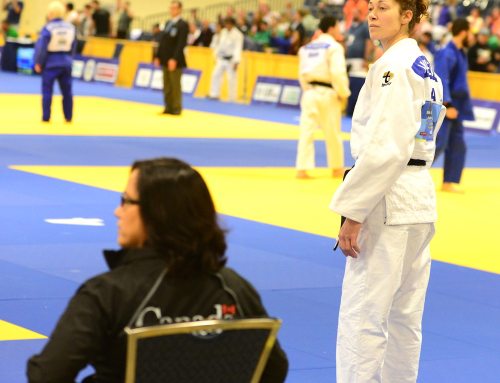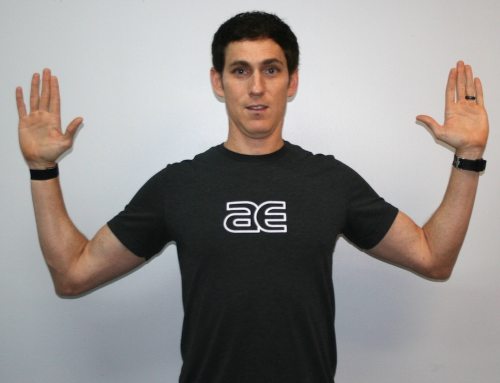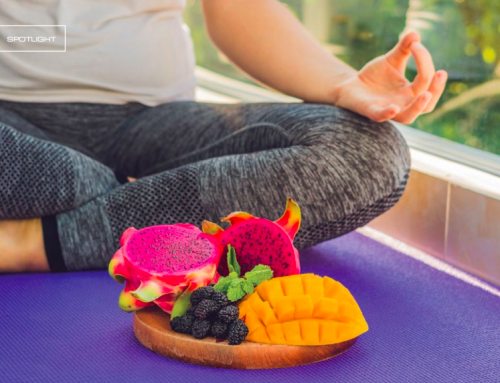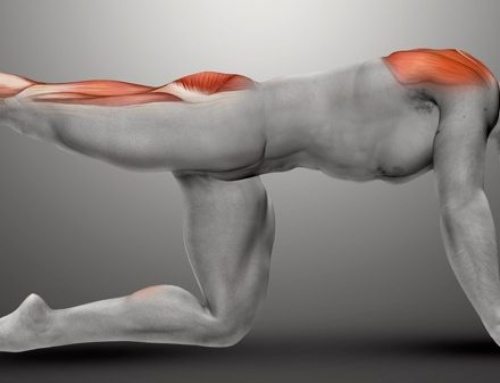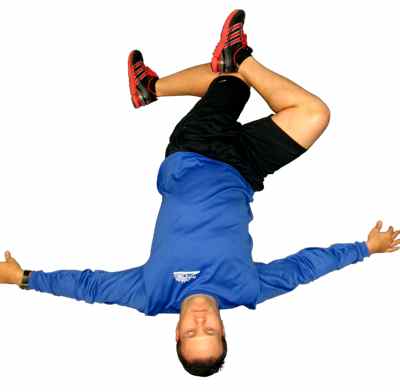
By Brian Schiff
Hip tightness is a common issue that many triathletes encounter throughout their training. The disciplines of running, swimming and biking offer their own unique joint loading and stress, however, there are general patterns of restricted mobility across the spectrum. Most endurance athletes are familiar with iliotibial band (ITB) problems, but there are other hip movement restrictions related to hip flexion, extension and rotation.
Limited Hip Extension
Most people sit a great deal during the day. The sitting posture inherently predisposes people to tightness in the hip flexors. Prolonged sitting coupled with several hours per week on the bike or in the pool provides a recipe for tightness in the iliopsoas and rectus femoris muscles. Hip flexor tightness may cause the following problems:
- Increased anterior pelvic tilt/lumbar lordosis = excess shear force on the lumbar spine
- Poor posture with running and cycling
- Shortened and weak back extensor muscles
- Stretched and weak hip extensor muscles
Limited Hip Flexion
Running and cycling up hills or generating a powerful kick in the water requires powerful hip extension. The primary extensors are the gluteus maximus and hamstrings, but do not overlook the adductors (groin muscles) as they assist in hip extension as well. In contrast to the hip flexors, tightness in this muscle group may lead to:
- Increased posterior pelvic tilt (flat back posture) = reduced running efficiency
- Weakness in hip extensors and limited hip flexion
- Shortened and weak abdominals
- Stretched and weak hip flexor muscles
Limited Hip Rotation
Most runners are familiar with the term piriformis syndrome. In addition to the piriformis muscle, there are five other small lateral rotator muscles in the hip: quadratus femoris, gemellus inferior, gemellus superior, obturator externus and obturator internus. Collectively, they work to help stabilize the hip and oppose medial rotation or medial collapse of the knee with running. Tightness in this group of muscles may contribute to:
- Piriformis tightness or piriformis syndrome
- Restricted internal rotation
- Diminished muscle activation of the gluteus medius/minimus (medial rotators)
The following stretches are designed to offer a quick daily routine to address common hip restrictions listed above:
- Half-kneeling hip flexor stretch – Raise the arms overhead and shift your weight forward while leaning away from the lead leg.
- Standing bent-knee hamstring stretch – Keep the back flat and lean forward at the hips until a stretch is felt in the hamstrings.
- Standing figure 4 stretch – Gently lean forward, keeping the knee as close to the table as possible (targets the glutes and piriformis).
- Lying internal rotation stretch – Cross one foot over the outside of the other knee and gently pull it down toward the floor.
Hold each stretch for 20-30 seconds and repeat two to three times on each side. I suggest performing them at the end of your training sessions for maximal benefit.
# # #
Brian Schiff, PT, CSCS, is a sports physical therapist and supervisor at the Athletic Performance Center in Raleigh. The APC in Raleigh and Cary currently offer a RunSmart Assessment available in group and individual formats. For more information, visit www.apcraleigh.com or www.apccary.com.


